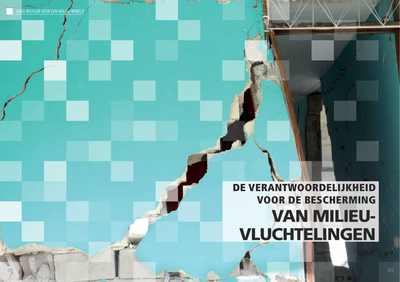Er is wereldwijd een groeiende groep milieuvluchtelingen waarvoor nog geen internationaal beschermingsregime bestaat. Het internationaal recht biedt geen adequaat antwoord. Dit artikel laat zien welke soorten milieuvluchtelingen bestaan, en zal betogen dat de bescherming van deze groep plaats kan vinden onder het VN-principe The Responsibility to Protect (R2P). Staten en de internationale gemeenschap hebben een zorgplicht voor milieuvluchtelingen. De basis hiervan ligt bij de Rechten van de Mens. De effectieve uitvoering van een aantal basisrechten wordt immers negatief beïnvloed door milieudegradatie. Tevens wordt staatssoevereiniteit steeds meer beschouwd als een verantwoordelijkheid. Via The Responsibility to Protect ontstaat er een integrale aanpak: 1) een staat is ten eerste zelf verantwoordelijk voor de bescherming van milieuvluchtelingen, 2) de internationale gemeenschap heeft een verantwoordelijkheid een staat hierbij te assisteren, en 3) indien een staat zijn milieuvluchtelingen niet wil of niet kan beschermen, verschuift de verantwoordelijkheid voor dit probleem naar de internationale gemeenschap, om collectief snel en beslissend te reageren. ABSTRACT The number of environmental refugees is growing, but an international legal protection regime is non-existent. This article shows eight different kinds of environmental refugees, and will argue that the protection of these groups can take place under the UN principle The Responsibility to Protect (R2P). States and the international community are obliged to help environmental refugees, based on the International Bill of Human Rights. The effective implementation of basic rights is influenced negatively by environmental degradation. Furthermore, changed notions regarding state sovereignty are also pointing at the responsibility of the state. The Responsibility to Protect (R2P) offers an integral approach: In first instance, the responsibility to take protective measures lies with the state itself. Secondly, the international community has a responsibility to assist. Lastly, when a state is not able or willing to protect its environmental refugees, the responsibility yields to the international community, to respond in a swift and decisive manner.
DOCUMENT
